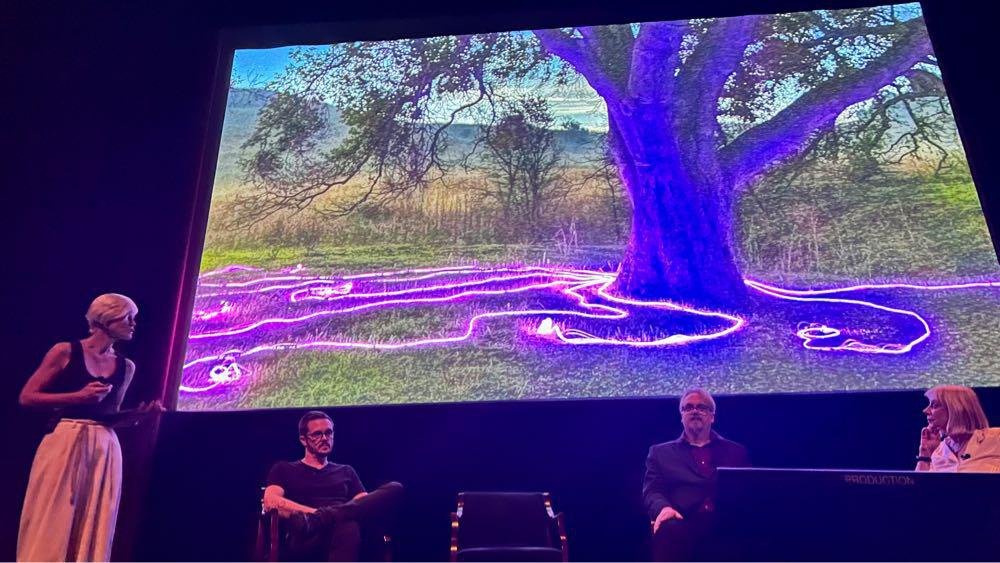Light Artist Annie Mitchell installing at The Falls of Ohio in Jeffersonville, Indiana, September 2021 // Photo by Bob Hower
Annie Mitchell is a multidisciplinary artist whose work spans light and sound installations as well as textile-based sculpture, exploring the delicate interplay between human biology, environmental rhythms, and sensory experience. Drawing on three decades in design, her immersive installations manipulate light and sound to synchronize human bio-functioning with external stimuli, slowing the perception of time and fostering deeper connections with the natural world. Her work, informed by neuroscience and ecopsychology, seeks to alter the collective tempo, offering audiences a visceral reprieve from the modern world’s accelerated pace.
Mitchell's self-directed practice in textile art complements her explorations in sensory perception, crafting eco-conscious sculptures and wall hangings from locally sourced wool. These tactile works create a grounding counterpoint to her light and sound installations, embedding themes of sustainability and natural materiality into her broader artistic inquiry. Audiences consistently report a profound sense of calm and relief from anxiety during and after experiencing her installations, a testament to her ability to create environments that resonate on a deeply emotional and physiological level.
Artist Annie Mitchell speaking about her work in public art at CODA Summit 2023 in San Jose, CA
Artist Annie Mitchell speaking at CODA Summit 2023 in San Jose, CA
Artist Annie Mitchell working on the final touches of a wet felted pod sculpture installation, Sept. 2024
Artist Artist Annie Mitchell installing at Playa in the Oregon Outback, March 2019




